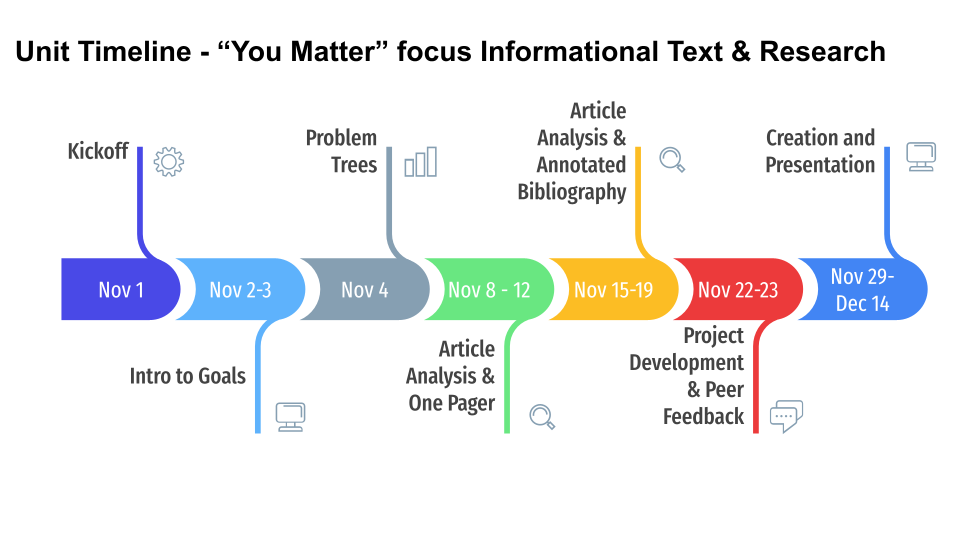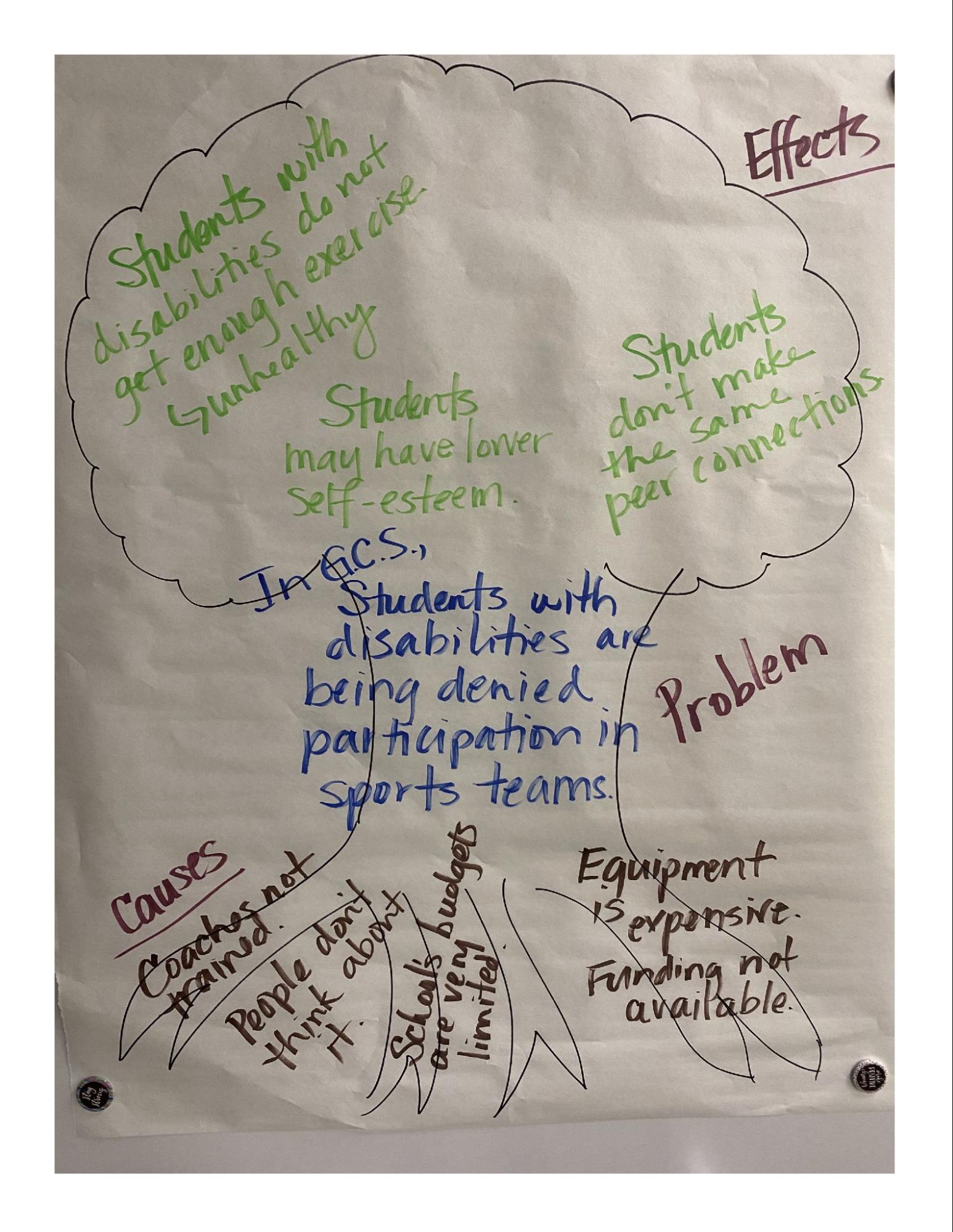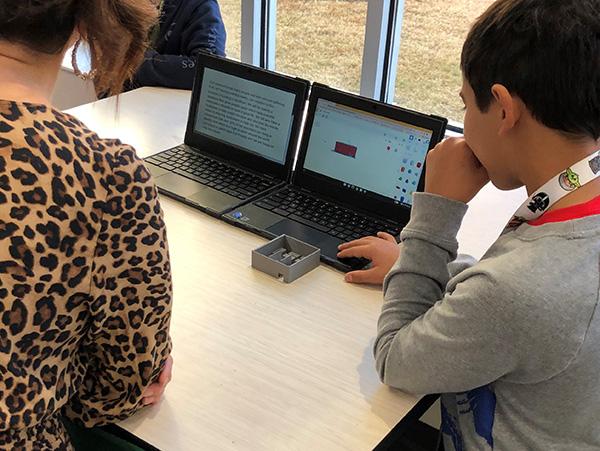
I am a middle school librarian and I love working with teachers to integrate the Sustainable Development Goals into the curriculum. One of the biggest challenges is the time argument: who has time to do some giant project when we have so much to cover? I worked with two innovative sixth grade English language arts teachers to integrate the Ciena Solutions Challenge into their unit on informational text. We took the entire unit to do the project and focused on integrating the English standards as we went. Because the scope of the Sustainable Development Goals can be really overwhelming and we were working with 11-year-olds, we limited their choices to six of the goals.
I would suggest to really help your students through the investigation phase of the challenge is to involve your school librarian. Full disclosure: I am a school librarian, and I was the lead for our challenge where I worked with two English teachers to integrate the Ciena Solutions Challenge into their informational text unit. So they focused on the strategies of using informational text and I focused on the rest of the project, really supporting students through that creative phase, but also supporting them through the investigative phase. Our students were young 11 and 12 years old and we decided to really scaffold for them.
We introduced the project with a kick-off where staff from Roger C. Peace Rehabilitation Hospital came to campus and provided an adaptive sports experience for our students to learn about the benefits of sports for all, which was great for engagement!
We read “Change Sings,” by Amanda Gorman and noted how students were the ones leading change, and we watched a video from Digital Promise Global about a “Global Goals, Local Solutions” project I did with library club students at my previous school to give them the confidence that kids their age CAN do this. I gave a quick overview of each Sustainable Development Goal and students completed a form, ranking their top three choices. We used these to form groups of students who were interested in the same Goals.

Project timeline, from kickoff to presentation. Photo Credit: Gaelyn Jenkins
Students were tasked with creating a “problem tree” identifying the big problem as they currently see it, as well as the roots (causes) and the effects. This activity helped lead to better focus/questions as they began their research.

Students’ root cause analysis tree diagram. Photo Credit: Gaelyn Jenkins
The teachers and I also decided I would scaffold the research for the students. I created a website for our students, with a page for each of the goals. Each page contained several links, including a “Why It Matters” overview article from the UN for a global perspective, as well as local content to help students make connections to our country and community.
Students completed a one-pager on the “Why It Matters” article, as well as an annotated bibliography for their research portion of the project, which enabled the English teachers to integrate a lot of their content. Here’s a quick overview of how one-pagers can be used in English and other subjects.

Student one-pager on Global Goal 2: Zero Hunger and Why It Matters. Photo Credit: Gaelyn Jenkins
As students wrapped up their research, we had them use the “Act” portion of the Challenge Builder to work through what they were going to do to solve the problem they identified in their research. We built in time for peer feedback where students got a chance to practice pitching their ideas.
We gave students in-class time to work on their products, supported with materials and equipment from our makerspace. Some students did public service campaigns with buttons, signs, websites and podcasts, some made games, and some created 3D models. I visited the classrooms every day and added some additional resources on the project website for support and reference.
We really focused on student voice, choice, and agency with our Ciena Solutions Challenge projects. We were working with sixth grade and we gave them six different goals that they could choose from. Then they were grouped based on which goal they wanted to work on the most. We did not limit them at all in terms of what their creative project was going to be, so that Act phase was truly wide open for them.
The capstone to this project was a “pitch day” where students presented their solutions to members of our school community, including the mayor of Fountain Inn, the Fountain Inn city administrator, the vice president of our local United Way, and representatives from Greenville Water.

Students presenting their game to the vice president of United Way Greenville. Photo Credit: Gaelyn Jenkins
I reached out to these community partners weeks before to explain our project and ask them to join us, and I was pleasantly surprised at how many responded! Students received authentic feedback from experts in the field, and several got business cards and promises of help if they chose to scale up their project.
By far my favorite day working on the Ciena Solutions Challenge with our sixth graders was presentation day. One of the things that I wanted to do when we started this project was make sure that our students had an authentic experience at the end to share what they learned and share their solutions. ... It was absolutely fascinating to see these community partners come in and listen to our students show understanding of this challenge that our community is facing and also present some really interesting unique ways to solve that issue. And, for our students to realize that these adults in positions of power in our community are listening to their ideas.

Student presenting his 3D model to a representative from Greenville Water. Photo Credit: Gaelyn Jenkins
Overall the feedback from the students, teachers, and community members was extremely positive and we felt like the project was a huge success for our first run. We will refine the processes a little bit each year as we learn, but test scores proved that we were able to integrate everything the students needed to know into a unit that also had so much meaning to them. This proved to me that it is possible and worthwhile to do longer-term projects that incorporate more student agency!
Your students are going to do amazing things with this, and I think your most important job is to stay out of the way—and it sounds a little crazy, especially as an educator when you're used to kind of being in control of everything—but these projects and this approach is putting the agency on the students.